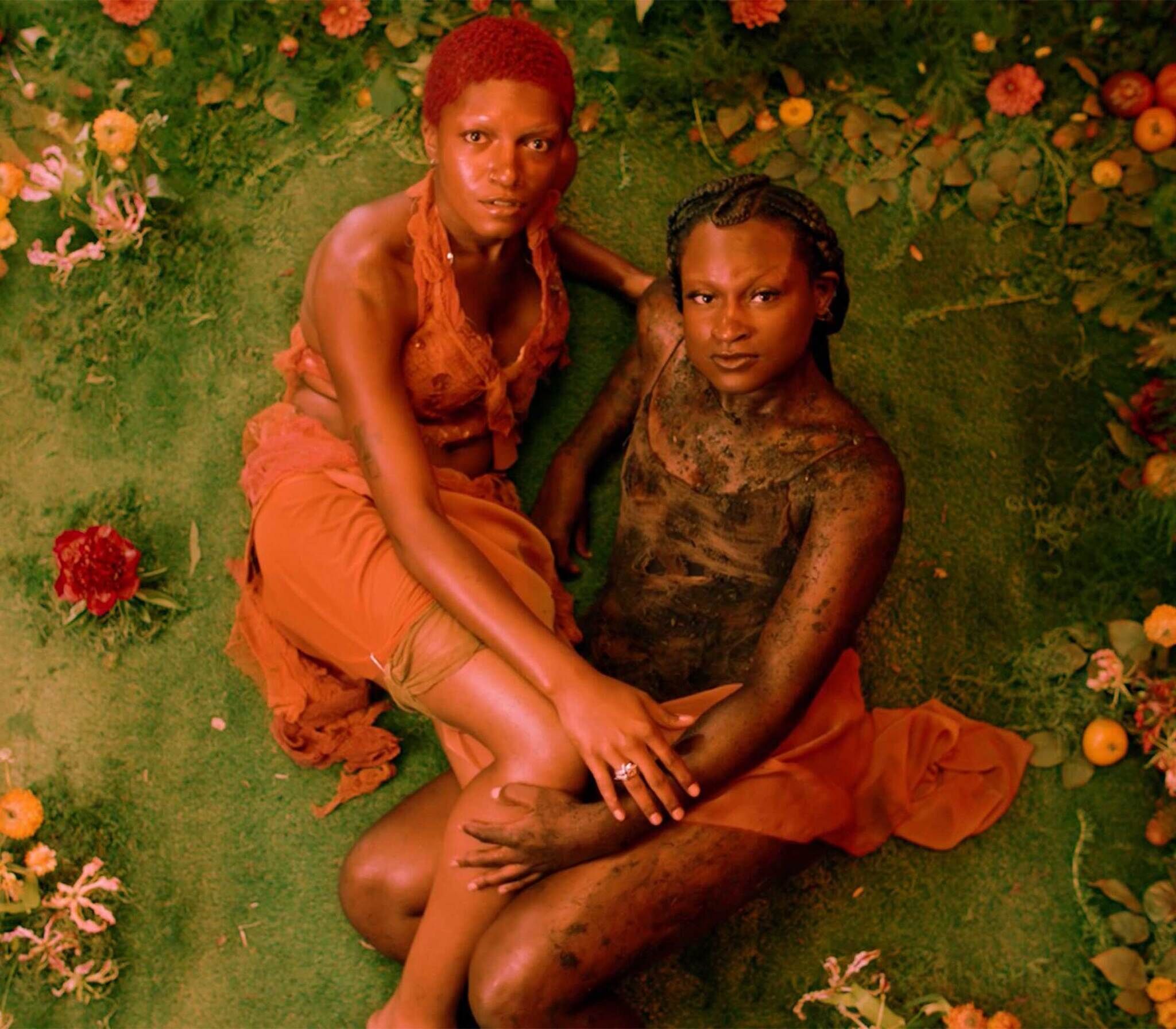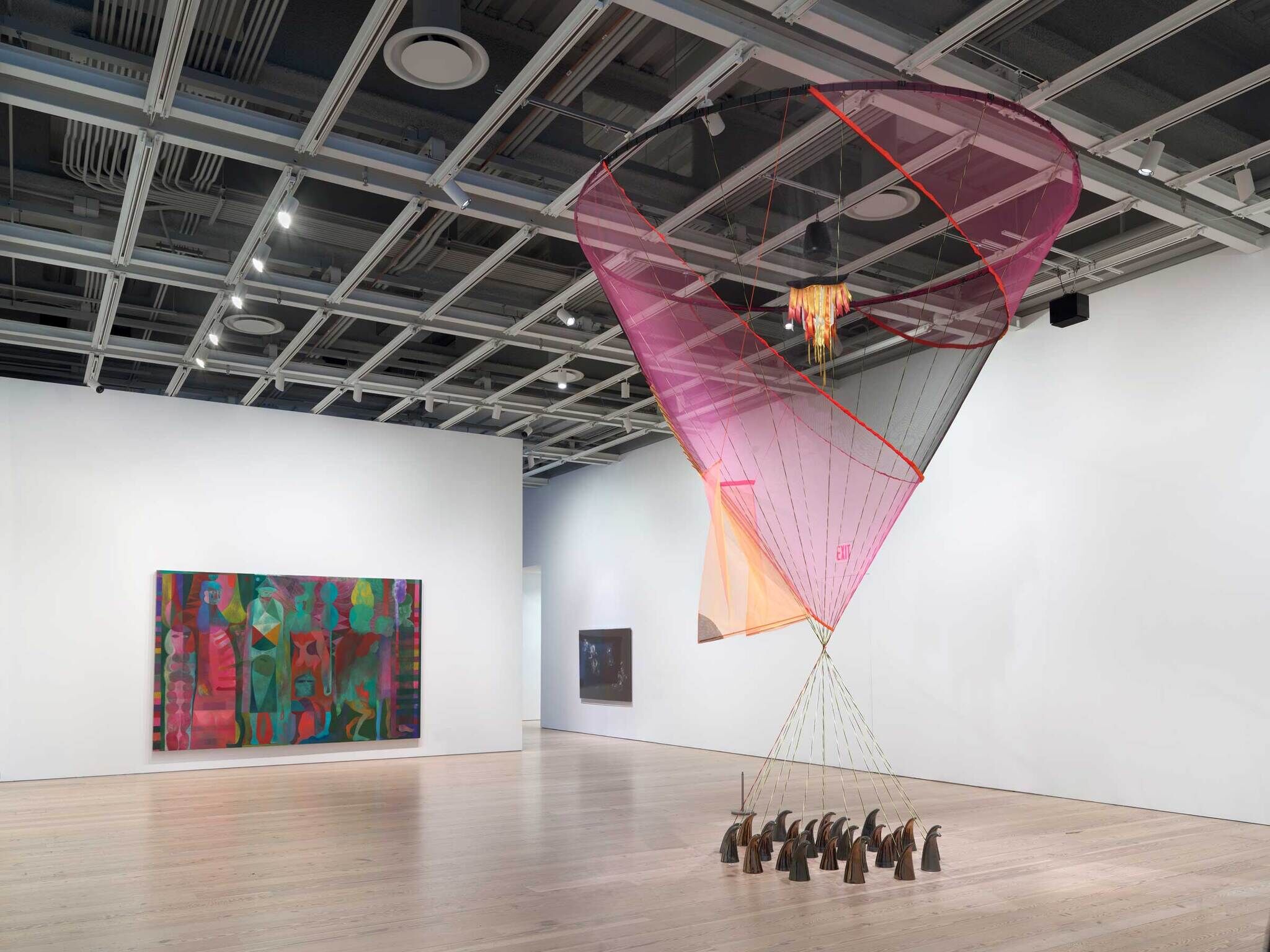Narrator:
Welcome to Artists Among Us Minisodes from the Whitney Museum of American Art. For us, this spring and summer are all about the 2024 Whitney Biennial. Over the course of the exhibition, we’ll be sitting down with some of the Biennial artists to talk about their art and what it means to be making art in the present unfolding moment.
Today we hear from Cannupa Hanska Luger about his Biennial work. The piece takes the form of a tipi inverted and hung from the ceiling of the gallery. It's made of a translucent material in rich pinks and burgundies and looking up at it from below has a kaleidoscopic effect. He mentioned to us that he uses the word tipi both literally, and as an acronym for Transportable Intergenerational Protective Infrastructure. He coined the phrase but said that “the phrase has always been what a tipi is in one way or another.” Here’s Cannupa Hanska Luger:
Cannupa Hanska Luger:
My name is Cannupa Hanska Luger. I am Mandan, Hidatsa, Arikara, and Lakota. And an enrolled member of the Three Affiliated Tribes of Fort Berthold. And I'm a ceramic artist. I have a background in ceramics anyway, and I do a lot of mixed media material.
The piece is called Uŋziwoslal Wašičuta, a Lakota phrase that says, “the fat-takers world is upside down.” There are aspects of this piece that are embedded, there are aspects that are visually experienced, and then there are concepts that with Indigenous knowledge or upbringing there's a deeper understanding of some of the work. But what you physically see is a tipi, full-sized, constructed out of crinoline which is a mesh material. So it has a transparent aesthetic to it. The skin surface is a hot pink and a black. It has trim and structural components that are made out of nylon ribbon.
We've inverted the tipi and presented it from the ceiling pointed down. It's got a strong physical space, you get this tension of the tipi’s inversion overhead. And I think that imposes certain sorts of tensions that we have trouble describing presently. And really just thinking about the weight of Indigenous knowledge on our present culture, present community, our present world being inadequately described and demeaned through erasure and omission redaction from our history lessons. It allows the scale and the weight of that to impose the room in a way that we haven't been allotted presently.
There's a model in physics around the space-time continuum, and it's two cones that invert and it's like a geometric model of the space-time continuum that is embedded in the tipi and its form and its purpose from a long time ago. It is a lens. It's often times described as a lens that recognizes the entire universe and the place that we stand being the same.
I'm interested in how we present a future look that isn't saying, "This is the way the future is going to go,” but “this is a way that the future doesn't narrow into a point that it actually expands in the other direction.” So what we're imagining today potentially and probably will become our distant future realities. And so recognizing that trajectory, that gives you a little bit of agency in time. "What do I want to carry from my past thinking about ancestral knowledge? How do I reassert that in the present by imagining its application in the future?" So this allows me to imagine futures that I'm actively participating in its creation presently by gathering information from the past.
I also see the tipi being co-opted by Artsy and Etsy and all of these different components that diminish the actual importance and the power of the tipi where you can get tiny versions of it for your children. You can get tiny versions of it for your dog. There are all of these iterations of that form. It is a form that you see repeated across the globe in different ways. But I think it's really important to understand the wholeness of its design outside of its form. And that access to the tipi should be an exchange and a recognition of all of the context, then you enter a tipi with the same level of humbleness. So presenting the tipi in a way that you cannot access it is a part of that conversation. So as an artist, I'm like, "Well, how do you present this work? Share that knowledge, but not slip into providing total access?" And so presenting it with this crinoline material, it allows you to see into that space but never actually physically be inside of it.
But then by inverting it and putting it on the ceiling, I can express that the present we are in is upside down. The tipi is not upside down. The tipi is actually in the right positioning, in right relationship in a right way in the world if the world isn't as upside down as it is presently. And so it could be accessible, but we need to flip everything that we value and consider as value in our world. The leap that we need to experience is like, "Oh, the tipi is not upside down. I'm upside down. Everything here is upside down." That's actually in right relationship.
Narrator:
Artists Among Us Minisodes are produced at the Whitney Museum of American Art by Anne Byrd, Nora Gomez-Strauss, Kyla Mathis-Angress, Sascha Peterfreund, Emma Quaytman, and Emily Stoller-Patterson.


